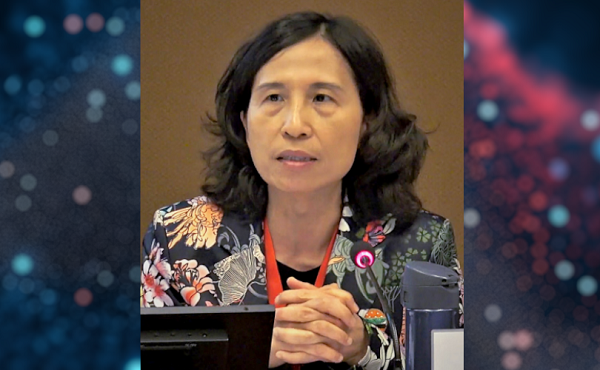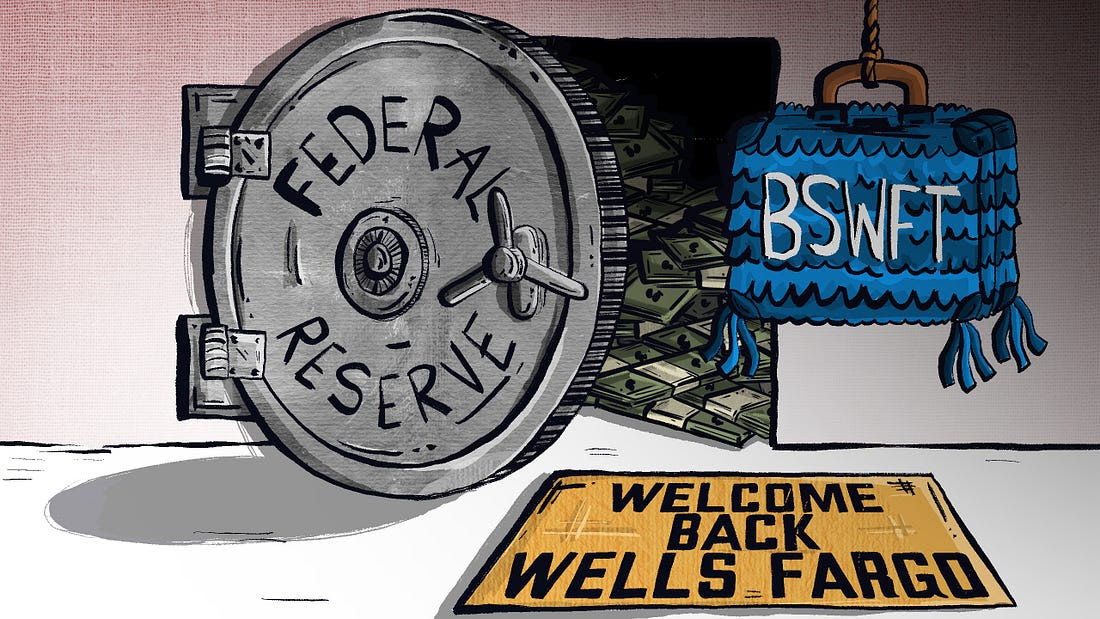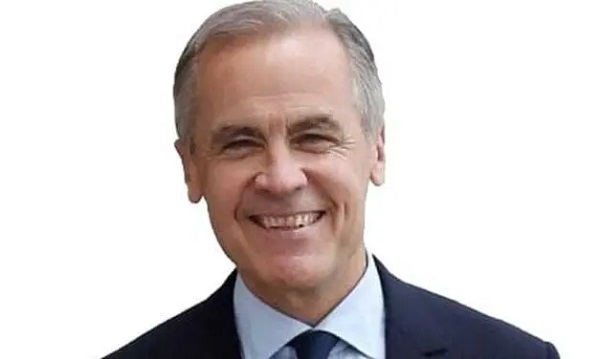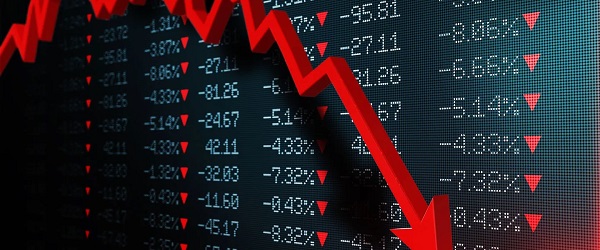Bruce Dowbiggin
Recency Bias: Why Kraken, Knights Avoided Expansion Fate
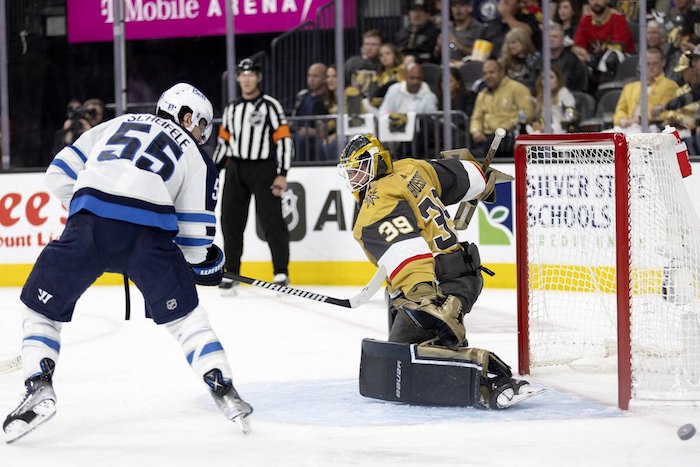
Like isn’t fair. That’s the triusm. For fans of established NHL teams the sight of the Vegas Golden Knights and Seattle Kraken still in the playoffs— while their own teams are playing golf— is a little galling. Aren’t expansion teams supposed to lose a lot for a long time before gaining success?
The Washington Capitals in their debut season of 1974-75 posted the worst single-season record ever at 8-67-5. (Imagine how much worse the losing if this occurred before the demise of ties?) The Caps never won two consecutive games; their 21 total points were half that of their expansion brethren, the Kansas City Scouts; their .131 winning percentage is still the worst in NHL history, and they lost 37 straight road games.

Only marginally better were the 1992-93 expansion Ottawa Senators, who brought the NHL back to Canada’s capital after the first Senators team folded in 1934. The team recorded three NHL records that season: longest home losing streak of eleven; longest road losing streak with a total of 39 (nearly the whole season) and fewest road wins in a season, with just one victory.
In the same year of 1992-92, the San Jose Sharks, a hybrid expansion team in its first year after leaving Cleveland, posted a brutal 11-71-2 mark. The Sharks allowed 10 or more goals in a game three times and finished the season 22nd in both scoring (219 goals for) and goaltending (359 goals against).
And so on. The 2000-01 Atlanta Thrashers went 14-57-7. The 1972-73 New York Islanders were a putrid 12-60-6 in their inaugural NHL campaign. (At least the Islanders paid off their fans for the abysmal start, winning the Stanley Cup within eight years and preceding to rip off four straight Cups from 1980-83.) The Caps took till 2018 to get a Cup. Kansas City moved to become the Colorado Rockies and then the New Jersey Devils before becoming a huge success with three Cups in 1995, 2000 and 2003. The Sharks and Senators have no championships at all.
Many had predicted similar failure for the Knights. But it didn’t happen that way. Nor did it go sideways in Seattle, either. For one, the enormous $500M Vegas/ $650M Seattle expansion fees demanded some competitiveness. Then, cap pressure from Gary Bettman’s salary cap forced established teams into bad decisions, forcing teams to be creative when they could not pay their stars more money. So clubs began handing out no-movement clauses (NMC) and no-trade-clauses (NTC) like Halloween candy in lieu of salary. These alterations would get their revenge in the Vegas Golden Knights expansion fiasco (for teams).
To guarantee a fair expansion draft process for the Golden Knights the league hired former Vancouver assistant GM Laurence Gilman to design a protocol for the selections. What he found did not exactly correspond to the assignment letter: “It was called an expansion draft, but an expansion draft is what occurred in 2001 when Minnesota and Columbus selected players between them. This was an asset-harvest event. Las Vegas wasn’t competing with another franchise and had the ability to map out exactly what they wanted to harvest.”

That they did. In 2016, the Knights had hired former player and ex-Washington Capitals GM George McPhee, who had from 1997 to 2014 orchestrated the building of the Caps from sad sacks to contenders. McPhee then hired personnel specialist Kelly McCrimmon to be his right-hand man in the process. By 2017, McPhee and McCrimmon understood how the expansion game was changed by issues such as NMCs and NTCs. In 2017, there were 66 NHL players who owned a NMC in their contracts, requiring them to be protected by their clubs in the expansion draft— even if those clubs would rather get out from under their contracts.
Columbus had given goalie Sergei Bobrovsky, Brandon Dubinsky, Nick Foligno and Scott Hartnell contracts with no-move-clauses, long before GM Jarmo Kekalainen had contemplated expansion ramifications, and they suffered the consequences as a result. Enter McPhee who worked a deal where Vegas would select William Karlsson — who had just one goal in his final 43 games in Columbus — while also receiving a first-round pick, a second-round pick and David Clarkson’s expensive contract. Karlsson would score 43 goals and 78 points in the Knights first season. The two draft picks would be turned into a deal for Nick Suzuki and, eventually, Max Pacioretty.
McPhee then targeted Anaheim. The Ducks were forced to protect Kevin Bieksa who didn’t have much hockey time left. The NMC in his contract required protection over younger teammates like Theodore, Josh Manson and Sami Vatanen. So Anaheim traded defenceman Shea Theodore to Vegas so Vegas would draft Clayton Stoner instead of one of their prime prospects. And so on.

The Knights exploitation of NMCs and NTCs turned trading from a trickle into a fire hose, making 10 trades before and after the 2017 draft. That yielded 12 draft picks, while also adding valuable pieces in Marc-Andre Fleury, Shea Theodore, Karlsson, Reilly Smith, Jonathan Marchessault and Alex Tuch as part of those deals.
Vegas became the best expansion team in any major pro sport ever. The newest team in the NHL has missed the postseason just once since its arrival in 2017-18, in 2022. This while Buffalo, Detroit and Ottawa have missed every postseason in that span, while Anaheim and New Jersey have just one playoff appearance since the Knights’ first season. Naturally this success did not go over well with those clubs and others who felt Vegas needed to pay some dues before becoming a regular in the playoffs.
So when it came time for Seattle Kraken to build their first roster the sentiment around there NHL was “let’s not do that again”. For example, the Kraken wouldn’t get a crack at the Knights’ roster— they were exempted from the expansion draft process. One other specific change was in the number of NMC and NTC players. After 68 in 2017, there would be just 52 players in that position when the Kraken made their selections in 2021. In short, there were fewer opportunities to pluck cap-strapped teams for players like Karlsson and Marchessault.

The lack of depth on the Kraken showed initially. Seattle wound up 15th in the Western Conference with just 60 points and a minus-69 goal differential. Comparisons to the Knights proved premature. It took another offseason for the Kraken to be competitive. But Matty Beniers is a leading Calder Trophy candidate; it looks like he will be a foundational piece for this fledgling franchise. Vegas and Seattle duelled for the leadership of the Pacific Division all season before Vegas prevailed.
Now they’re in the postseason with the Knights, playing on equal footing with the best. Few players remain from that first Knights team, and few more with the Kraken. But the results remain the same.
Sign up today for Not The Public Broadcaster newsletters. Hot takes/ cool slants on sports and current affairs. Have the latest columns delivered to your mail box. Tell your friends to join, too. Always provocative, always independent. https://share.hsforms.com/16edbhhC3TTKg6jAaRyP7rActsj5
Bruce Dowbiggin @dowbboy is the editor of Not The Public Broadcaster A two-time winner of the Gemini Award as Canada’s top television sports broadcaster, he’s a regular contributor to Sirius XM Canada Talks Ch. 167. Inexact Science: The Six Most Compelling Draft Years In NHL History, his new book with his son Evan, was voted the seventh-best professional hockey book of all time by bookauthority.org . His 2004 book Money Players was voted sixth best on the same list, and is available via http://brucedowbigginbooks.ca/book-personalaccount.aspx
Bruce Dowbiggin
Eau Canada! Join Us In An Inclusive New National Anthem

This past week has seen (some) Canadians celebrating their heritage— now that Mike Myers has officially reinterpreted Canadian culture as a hockey sweater and Mr. Dressup. This quick-change was so popular that Canadian voters even forgot an entire decade of Justin Trudeau.
In the United States, the people who elected Donald Trump– and not Andrew Coyne– to run their nation celebrated Independence Day with stirring renditions off The Star Spangled Banner, although few could surpass the brilliant performance of the song by the late Whitney Houston at the 1991 Super Bowl.
The CDN equivalent is some flavour of the month changing the words to O Canada at the Grey Cup game. Canada’s national anthem has always been open to interpretation by people who may or may not have Canada in their hearts. At the 2023 NBA All Star Game Canadian chanteuse Jully Black became the latest singer to attempt a manicure to the English lyrics of O Canada, penned for the 1880 Saint-Jean-Baptiste Day ceremony ( Calixa Lavallée composed the music, after which words were written by the poet and judge Sir Adolphe-Basile Routhier. The English lyrics have “evolved” over the years, just like the dress code for the CDN PM..)

Black amended the first line from “our home and native land” to our home ON native land”. Because something-something. But this creative license is nothing new. Unlike Chris Stapleton, Marvin Gaye or Whitney Houston with the Star Spangled Banner, interpreters of O Canada have seen fit to amend the lyrics to their sensibilities. Roger Doucet, famed anthem singer of the Montreal Canadiens in the 1970-80s, tried to add the words “we stand on guard for truth and liberty” in place of the first “we stand on guard for thee”.
In 1990, having nothing better to do, Toronto City Council voted 12 to 7 in favour of recommending that the phrase “our home and native land” be changed to “our home and cherished land” and that “in all thy sons command” be partly reverted to “in all of us command”. (The latter was officially adapted.)
While those attempts had mixed outcomes it appears it’s just a matter of time till Ms. Black’s class-conscious culling of the words is accepted. Being generous we here at IDLM thought we’d short-circuit piecemeal attempts to create a throughly Woke version of the anthem that would last till the latest fad come along. Herewith our 2023 definitive O Canada that even— maybe only— Justin Trudeau could love:
“O Canada” (Ignores the French fact in our culture) Change to “Eau Canada”
“Our home on native land” (ignores indigenous land claims) Change to “Get off our land, settlers”
“True patriot love in all of us commands” (Only true patriot love? There were officially 78 kinds of relationships in Trudeaupia. And commanding love?) Change to “Love the one you’re with”.
“With glowing hearts we see thee rise” (rise suggests triumph of white triumphalist dogma) Change to “Non judgementally we oppose the crushing impacts of Euro-based autocracy”
“The true north strong and free” (How can anyone be strong or free when we support America’s killing fields?) Change to “Heteronormative thinking must be stamped out at our borders. If we even have borders anymore.”
“From far and wide” (Body shaming) Change to “Obesity is a disease that is not helped by putting it in the national anthem.”
“O Canada” (biased against A, B, AB blood types) change to “Science Must Be Believed”
“We stand on guard for thee” (Spreads hate against the non ableist community) Change to “Please remain seated.”
“God keep our land” (God? God? What is this, the Reformation) “Change to “It’s your thing”
”Glorious and free” (Glorious harkens to the bourgeois subjugation of Indigenous thought processes by white Christian priests) Change to “A genocidal state if there ever was one”.
“O Canada we stand on guard for thee/
O Canada we stand on guard for thee” The denial of trans rights is used twice here to emphasize the intolerable burdens faced by people of the LGBTQ2R community as they seek respect and compensation for the evils of the founding oppressors.) Change to “Eau Canada, after 6.5 hours of intensive lectures on the gender, race and dissociative application of class war on your citizens you may someday come to understand that this song is a manifestation of your bigotry and exploitation of minorities— and why rhyming lines like “thee and free” is the work of the devil or J.K. Rowling, whomever comes to mind first.”

There. That wasn’t so tough, was it? Flows trippingly off the tongue like Mark Carney refusing a special inquiry into China buying the electoral process. Or perhaps we should simply accept a literal translation of the original French lyrics:
“O Canada!
Land of our ancestors
Glorious deeds circle your brow
For your arm knows how to wield the sword
Your arm knows how to carry the cross;
Your history is an epic
Of brilliant deeds
And your valour steeped in faith
Will protect our homes and our rights.”
Yikes. That’s downright fascistic. But it’s Quebec, and we have to allow them their peccadilloes. So circle your brow with glorious deeds, grab a cross and a sword and valour steeped in faith. And remember we must be adaptable in the new era.
Unless it’s Alberta using the adapting to fuel its CO2-belching machines. In which case it’s man the battlements and follow Mike Myers into the fight.
Bruce Dowbiggin @dowbboy is the editor of Not The Public Broadcaster A two-time winner of the Gemini Award as Canada’s top television sports broadcaster, his new book Deal With It: The Trades That Stunned The NHL And Changed hockey is now available on Amazon. Inexact Science: The Six Most Compelling Draft Years In NHL History, his previous book with his son Evan, was voted the seventh-best professional hockey book of all time by bookauthority.org . His 2004 book Money Players was voted sixth best on the same list, and is available via brucedowbigginbooks.ca.
Bruce Dowbiggin
Canada Day 2025: It’s Time For Boomers To Let The Kids Lead

So how did you spend your first Canada Day under new PM Mark Carney? If you’re CBC, freed from the clutches of Pierre Poilievere, you do a fawning interview with ex-pat comedian Mike Myers, whose Elbows Up appearance on Saturday Night Live and whose partisan hockey sweater appearance with Carney were pivotal moments in the recent election. (Saving CBC from drastic budget cuts— not that they mentioned it.)
After Donald Trump’s bellicose 51st state comments, Myers’ nostalgic harkening to the days of Gordie Howe and Mr. Dressup pivoted Boomers’ voter preferences in Canada. Soft Quebec sovereigntists petrified by Trump abandoned the Bloc for the Liberals. Progressives ditched the NDP for the Grits. And some wobbly Conservatives moved to Carney’s side, too, after the charm offensive by Myers, who hasn’t lived in Canada since the 1980s.

The result? Liberals vaulted 20 points in the polls and barely missed a majority in their fourth consecutive election win. Boomers were exultant. Their subsidized media was joyous. And the rest of the world asked if Canada was a serious country after the Libs naked substitution of Carney for the loathed Justin Trudeau. After all, hadn’t the U.S. Democrats tried the same thing and been summarily spanked by voters?
More to the point, had Canadian voters missed a great opportunity by sticking their heads in the ground on Chinese gangs using Canada as a drug launch pad, Canadian banks being fined billons for money laundering, immigration flooding social services, cratering GDP and Palestinian protests clogging the streets?
This at a time when the under-50 generation has lost faith in its destiny within Canada. As we wrote in March why are 43 percent of 18-36 male CDNs telling pollsters they would accept U.S. citizenship if they were guaranteed full rights and financial protections? Where upper-class products of liberal education— the future professional class— have taken to wearing keffiyehs to the convocations and demonstrations. Where housing is an unattainable goal in most major Canadian urban centres.
It’s not hard to see them looking at the Mike Myers obsession with a long-gone Canada and saying let’s get out of here. The signs are there. Recently former TVOntario host Steve Pakin attended two convocations. The first at the former Ryerson University, which switched its name to Toronto Metropolitan University in a fit of settler colonizer guilt. The second at Queens University, traditionally one of the elite schools in the nation. Here’s what he saw.
“At the end of the (TMU) convocation, when Charles Falzon, on his final day as dean of TMU’s Creative School, asked students to stand and sing the national anthem, many refused. They remained seated. Then, when the singing began, it was abundantly noticeable that almost none of the students sang along. And it wasn’t because they didn’t know the words, which were projected on a big screen. The unhappy looks on their faces clearly indicated a different, more political, explanation.

“I asked some of the TMU staff about it after the ceremony was over, and they confirmed what I saw happens all the time at convocations. Then I texted the president of another Ontario university who agreed: this is a common phenomenon among this generation at post-secondary institutions.”
At Queens, where Canadian flags were almost non-existent, O Canada was sung, but the message of unrest was clear: “Convocation sends a message of social stability,” Queen’s principal Patrick Deane began in his speech. “It is a ceremony shaped in history. You should value your connection to the past, but question that inheritance. Focus on the kind of society you’d like to inhabit.”
You can bet Deane is not telling them to question climate change and trans rights. As Paikin observes, “if we fail to create a more perfect union, we shouldn’t be surprised when a vast swath of young people don’t sing our anthem the way so many of the rest of us do.” So why are the best and brightest so reluctant to see as future in becoming the new professional class that runs society?
In the Free Press River Page searched the source of their discontent. “If the Great Recession, Covid-19, and the spectre of an artificial intelligence-assisted ‘white collar bloodbath’ has taught the professional class anything, it is that their credentials cannot save them. This insecurity, compounded by the outrageous cost of living in many large cities, has pushed the PMC’s anxieties to the breaking point.
“Add that to the triumph of identity politics in professional class institutions like universities, corporate C-suites, non-governmental organizations, and media—itself a byproduct of inter-elite competition as many have observed—and what you have is the modern left.
“… they’ve already come to the baffling conclusion that there’s no difference between class struggle and child sex changes. More to the point, the socialist mantra “From each according to his ability, to each according to his need” has only ever stood the test of time in Anabaptist sects. It requires a religious devotion to self-sacrifice that is not characteristic of this anxious and hyper-competitive class—as many actual socialists have spent the last decade warning.”

As we wrote in March Boomer nostalgia is a dead end. “It’s time that Canada’s aging elite ceded a greater voice in the national debate to younger voices. They need an intervention of the type Trump is now performing on Canadians addicted to sitting in first class but paying economy. He brought them into a room with the chairs and levelled with them about getting the free stuff they assumed was their right. Defence, security, trade, medical access. He’s the first president to do this in half a century.
And like all people addicted, CDN Boomers don’t want the truth. They want performance theatre, T-shirts and hockey games. They blame Trump for their predicament, caught between grim realities. Will they take the 12 steps? Or will their kids have to tell them the facts as they escort them to the home?” Because we’re now seeing the likely answer to that question everywhere in Canadian society.
Bruce Dowbiggin @dowbboy is the editor of Not The Public Broadcaster A two-time winner of the Gemini Award as Canada’s top television sports broadcaster, his new book Deal With It: The Trades That Stunned The NHL And Changed hockey is now available on Amazon. Inexact Science: The Six Most Compelling Draft Years In NHL History, his previous book with his son Evan, was voted the seventh-best professional hockey book of all time by bookauthority.org . His 2004 book Money Players was voted sixth best on the same list, and is available via brucedowbigginbooks.ca.
-

 Business2 days ago
Business2 days agoCarney’s new agenda faces old Canadian problems
-

 Bruce Dowbiggin2 days ago
Bruce Dowbiggin2 days agoEau Canada! Join Us In An Inclusive New National Anthem
-

 Daily Caller2 days ago
Daily Caller2 days ago‘I Know How These People Operate’: Fmr CIA Officer Calls BS On FBI’s New Epstein Intel
-
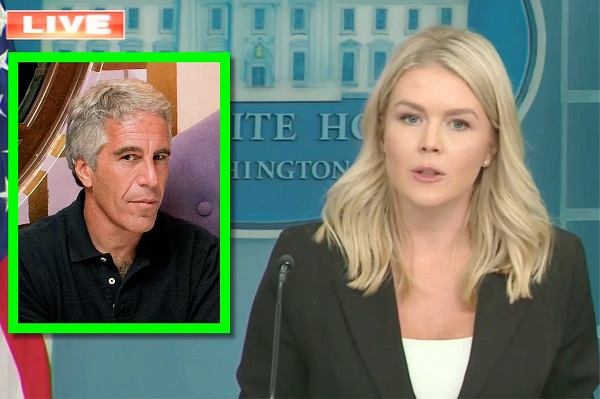
 Crime2 days ago
Crime2 days agoEyebrows Raise as Karoline Leavitt Answers Tough Questions About Epstein
-
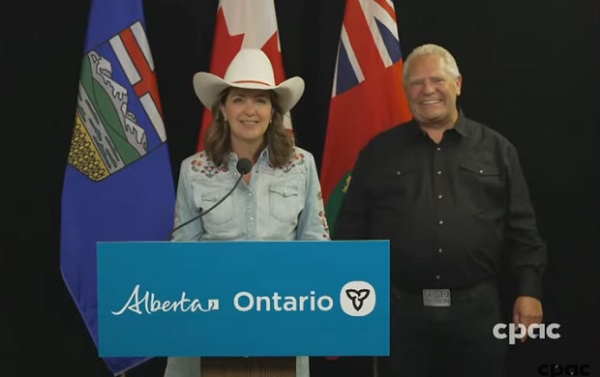
 Alberta2 days ago
Alberta2 days agoAlberta and Ontario sign agreements to drive oil and gas pipelines, energy corridors, and repeal investment blocking federal policies
-

 Alberta2 days ago
Alberta2 days agoCOWBOY UP! Pierre Poilievre Promises to Fight for Oil and Gas, a Stronger Military and the Interests of Western Canada
-

 International2 days ago
International2 days agoChicago suburb purchases childhood home of Pope Leo XIV
-

 Daily Caller2 days ago
Daily Caller2 days agoBlackouts Coming If America Continues With Biden-Era Green Frenzy, Trump Admin Warns

